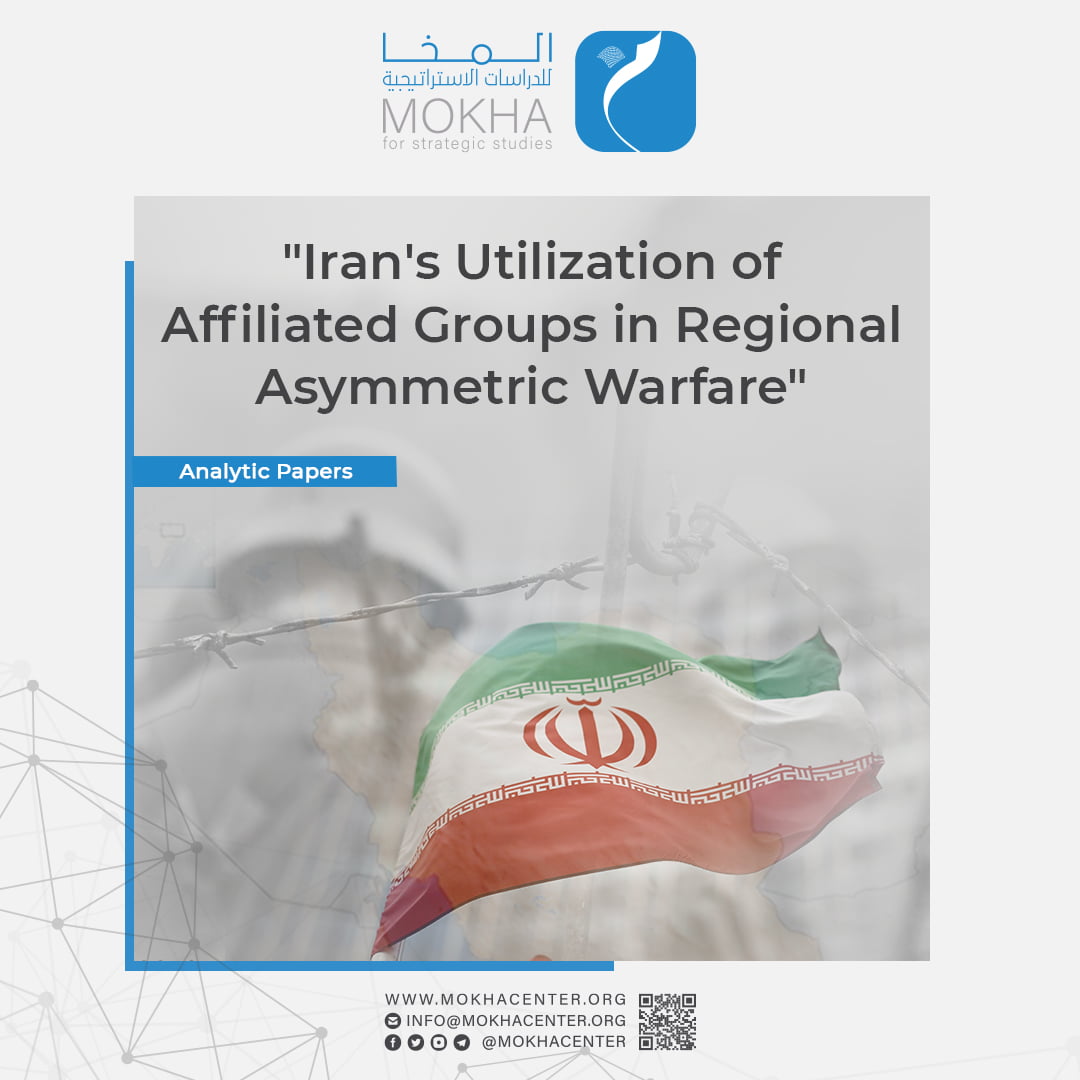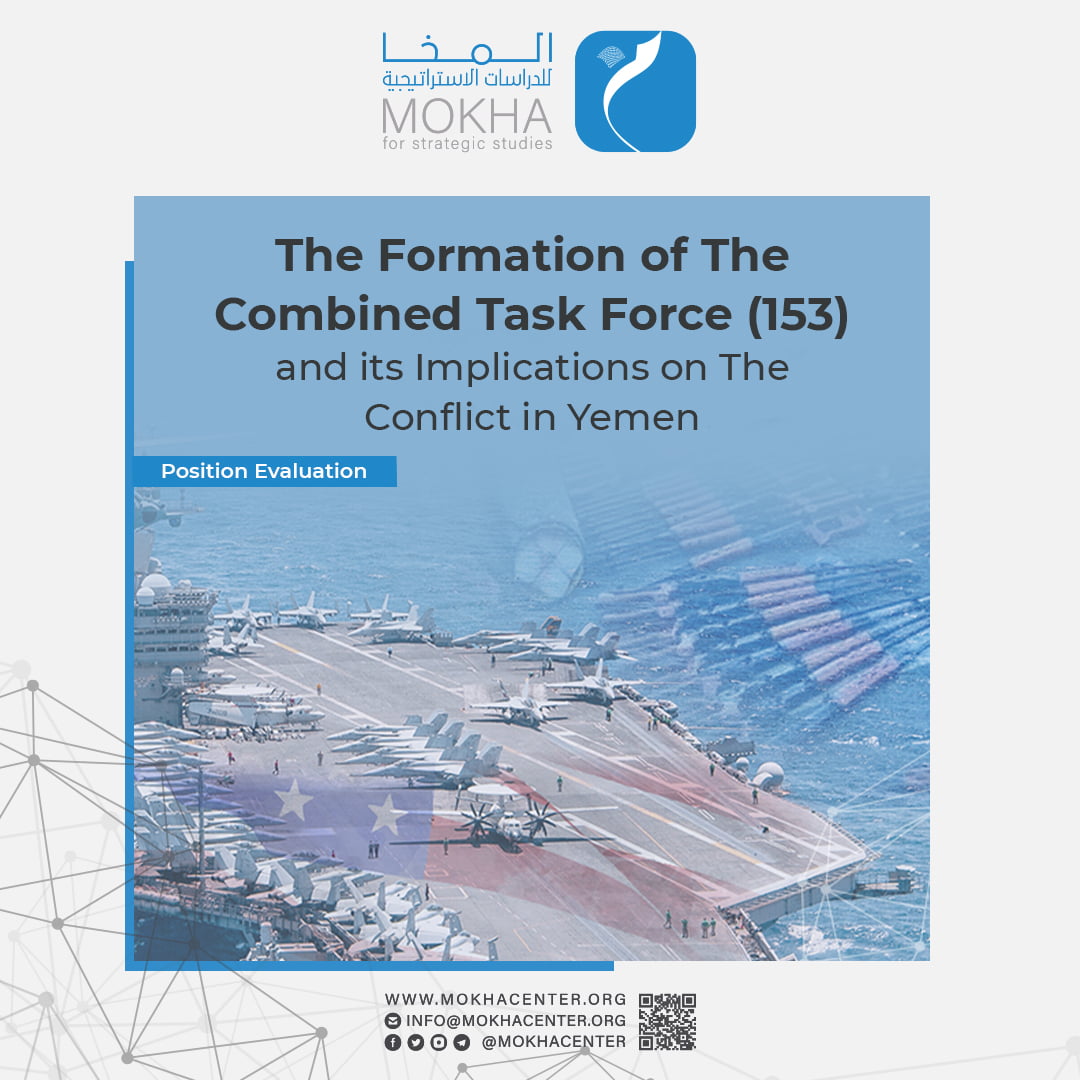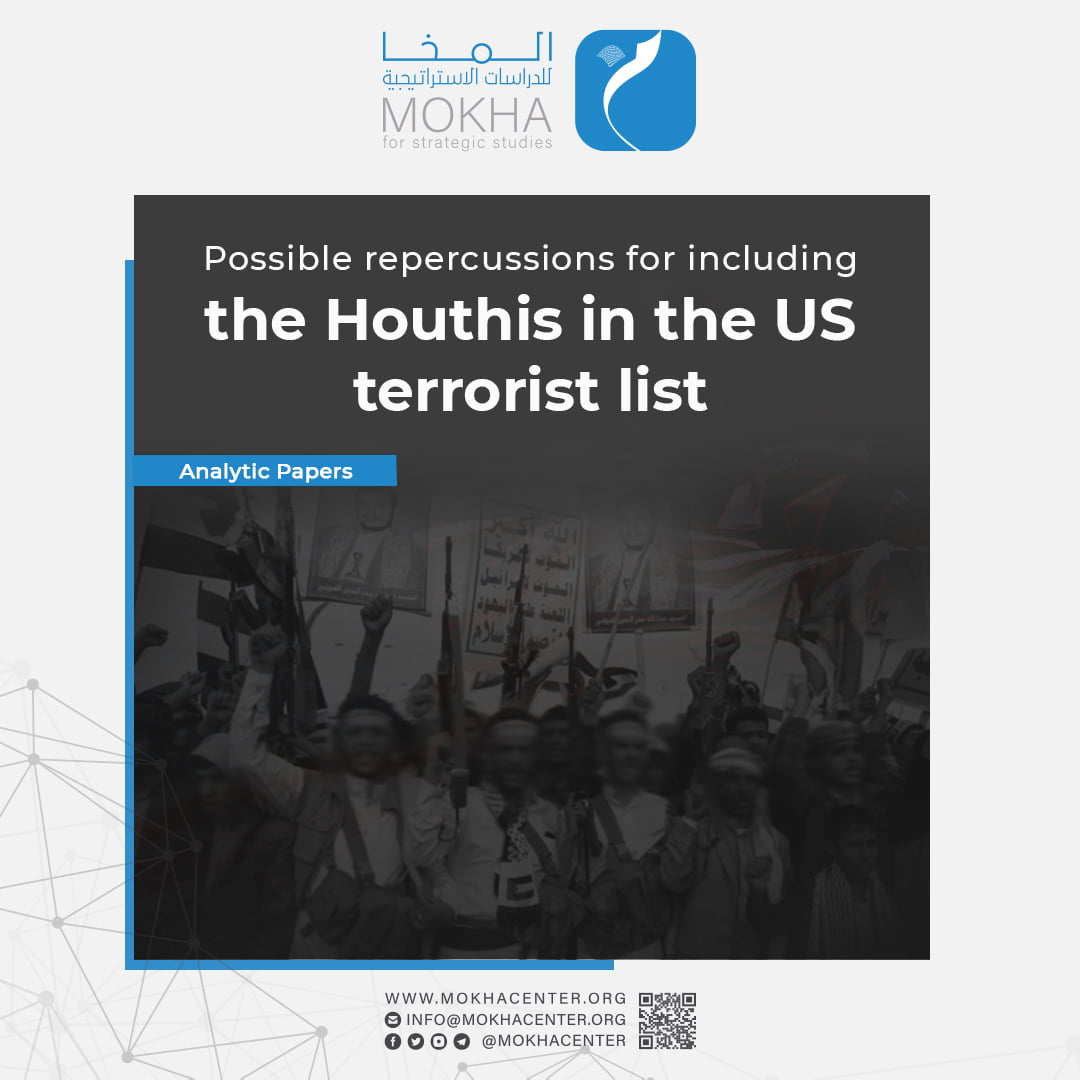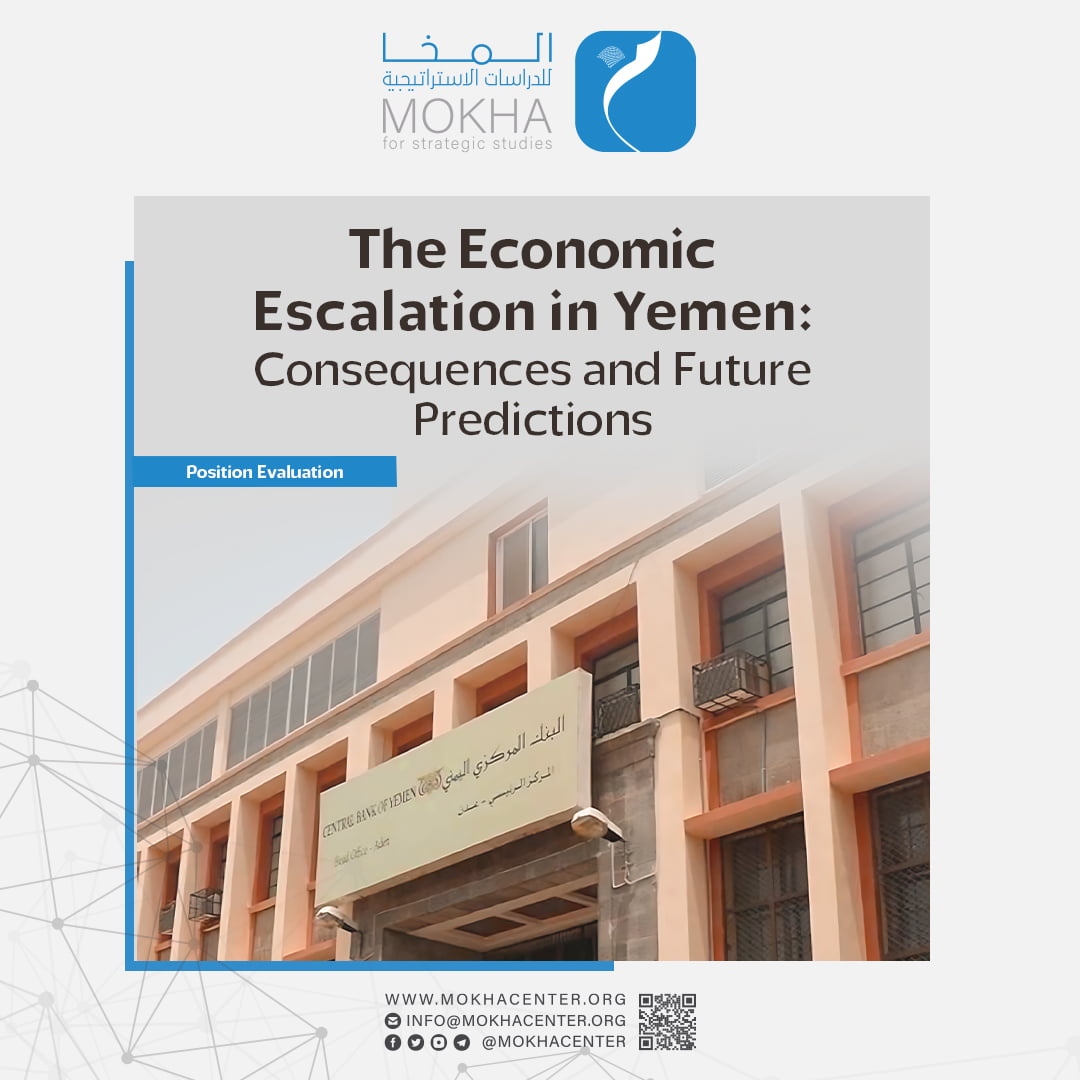The Potential of an Expanded Truce Agreement in Yemen Amid Regional Unrest Abstract
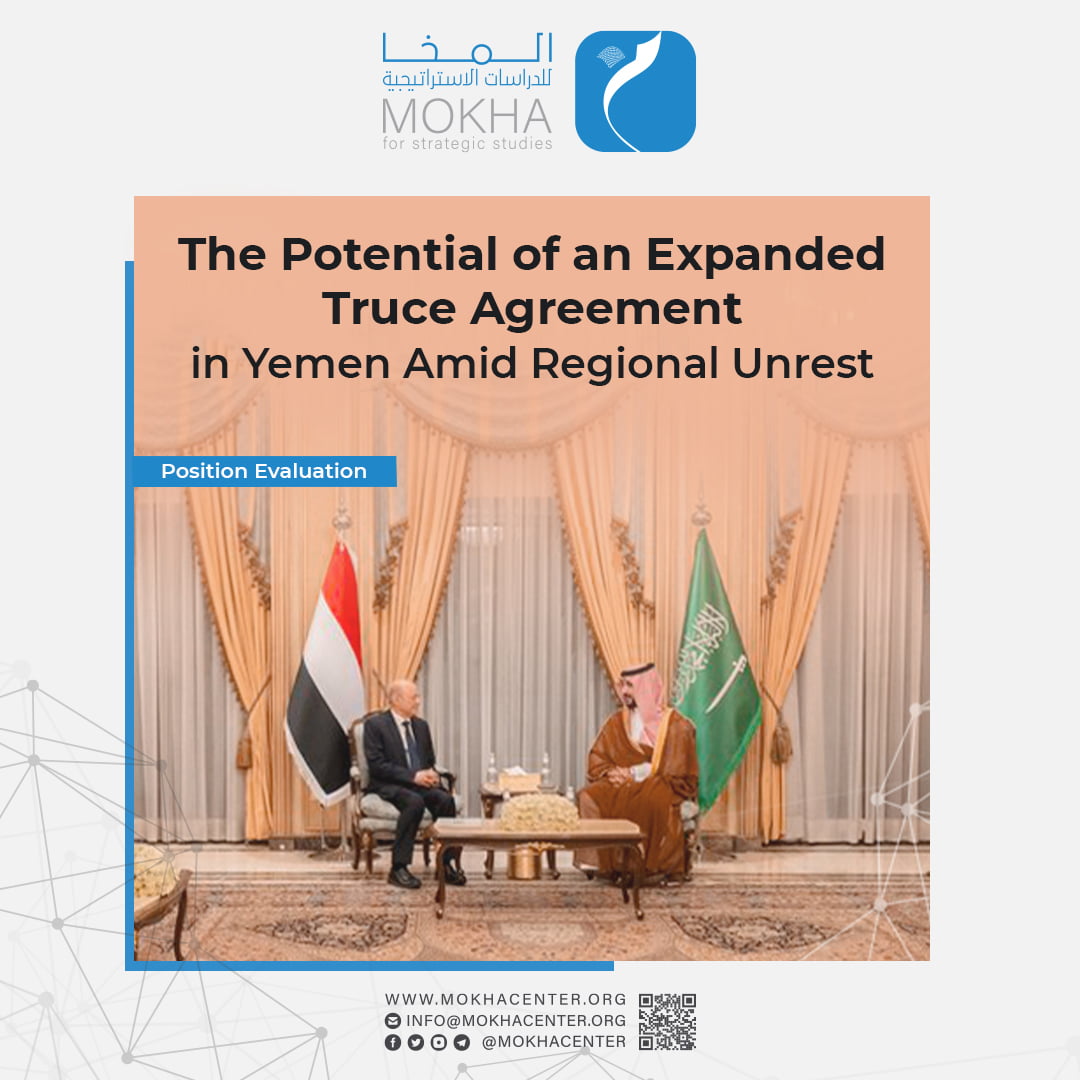
| Getting your Trinity Audio player ready... |
Abstract
Recent reports suggest that Saudi Arabia is actively encouraging Yemeni parties to reach a renewed and extended humanitarian truce, building upon the agreement established in April 2022, and launching a comprehensive political process between these parties. Multiple sources have confirmed that all members of the Presidential Leadership Council had been summoned to Riyadh on Tuesday, November 14, 2023, raising expectations that this gathering is linked to ongoing consultations on a political settlement in Yemen.
Following their arrival in Riyadh, the chairman and members of the council engaged in separate meetings with key figures, including the UN envoy to Yemen, Hans Guttenberg, the American envoy to Yemen, Timothy Lenderking, and Saudi Minister of Defense, Prince Khalid Bin Salman. Prince Khalid, in a post on the X platform, highlighted discussions with the Yemeni Presidential Leadership Council on “efforts made in the Yemeni issue” and emphasized the importance of cooperation and coordination in implementing a roadmap supervised by the United Nations. He underscored the need for prioritizing the national interests of all Yemeni parties to achieve a comprehensive and enduring peace1.
Contrary to media reports of heightened tension due to the Houthi group’s claims of sending missiles and drones toward Israel, the U.S. State Department announced that its special envoy to Yemen, Timothy Lenderking, would visit the Gulf states. The purpose of the visit was to strengthen ongoing peace efforts led by the United Nations and enhance regional coordination for a permanent resolution to the conflict. In a statement, the U.S. State Department emphasized its commitment to securing a peaceful solution in Yemen, working closely with regional partners to support UN-led peace efforts and alleviate the profound consequences of the conflict.
This paper will examine the potential opportunities for signing an expanded truce agreement and explore the potential repercussions of such diplomatic endeavors.
General background:
In a notable shift around 2021, Riyadh, after years of supporting the Yemeni war, embraced a new policy aimed at halting the conflict and disengaging from it. This shift was underscored on March 22, 2021, when Saudi Arabia announced a comprehensive initiative to bring an end to the war in Yemen. After this announcement, Saudi efforts persisted, and on April 7, 2023, the country endorsed a humanitarian truce. Concurrently, the formation of the Presidential Command Council was declared, with its primary objective being the initiation of negotiations with the Houthis to achieve a lasting ceasefire across the entire republic. The council’s formation also highlighted its commitment to engaging in discussions aimed at a final and comprehensive political solution. This solution would encompass a transitional phase, steering Yemen from a state of war to a state of lasting peace2.
On April 8, 2023, a Saudi delegation led by the Saudi Ambassador to Yemen, Muhammad Al Jaber, visited Sana’a, accompanied by an Omani delegation. The ambassador engaged in six days of discussions with the leadership of the Houthi group, aiming to finalize the vision of a comprehensive settlement negotiated between the two parties in the Omani capital, Muscat. In September 2023, a Houthi delegation visited the Saudi capital for a five-day visit.
Despite expectations that the Israeli conflict in Gaza, particularly the heightened connection between the Houthi group and the Iranian-led axis of resistance, coupled with Houthi propaganda involving missile and drone launches toward Israel, would strain relations between Saudi Arabia and the United States, negotiations on the truce and war cessation continued. Contrary to predictions, Riyadh persisted in its efforts to achieve a truce and promote negotiations between Yemeni parties and the United States also maintained its diplomatic engagement. Saudi Arabia summoned members of the Leadership Council to Riyadh, where discussions with Saudi Defense Minister Prince Khalid bin Salman centered on “cooperation and coordination regarding the roadmap between Yemeni parties to end the crisis.” The talks emphasized “the importance of prioritizing the national interest of all Yemeni parties to achieve a comprehensive and enduring peace.”3
According to media reports, ongoing consultations regarding the renewal of the truce agreement are centered around the initial peace proposal presented, by Saudi Arabia, to the Houthis. The Saudi ambassador initially conveyed the proposal to Sana’a, with subsequent amendments and observations incorporated following input from both the legitimate government and the Houthi group. Approximately a month ago, the adjusted map was presented to the Presidential Leadership Council, which, after rejecting the initial formula, requested modifications. These amendments were then communicated to the Houthi group, and their response has not yet come.
The Houthis have indicated acceptance of changes related to the mechanisms for tax and customs collection at the port of Hodeidah and the method for salary disbursement in the original version of the peace map. The final stance, however, hinges on ongoing discussions and the nature of the Houthi response concerning the peace map and its provisions. Should consensus be reached on all aspects, the peace map is anticipated to be signed, marking a significant step toward halting the ongoing conflict in Yemen, with the Houthi delegation in attendance4.
Motivating Factors
The actions taken by both Saudi Arabia and the Houthi group are underpinned by various motivations, outlined as follows:
First: Saudi Arabia’s Motivations
Primary among the motivations guiding Saudi Arabia toward an extended truce between Yemeni parties is its pivotal role in driving the initiative. Despite external pressures urging a freeze or postponement of the Yemeni file amidst regional and international developments, Saudi Arabia remains at the forefront, actively propelling the discussions forward. Key motivations for Saudi Arabia’s proactive stance include:
- Expediting War Withdrawal
Saudi Arabia appears resolute in concluding the war and withdrawing from its active involvement, making it a top priority. Despite challenging regional circumstances, the kingdom is actively steering toward a truce with the Houthi group. This commitment is not merely a momentary stance but appears to be a consistent trend, evident since at least 2021. Saudi Arabia declared its ceasefire initiative in March 2022, even amid heightened tensions when the Houthi group launched a significant attack on vital facilities, like the Abqaiq and Khurais refineries in the eastern region of Saudi Arabia5.
- Prioritizing Vision 2030 Implementation
Saudi Arabia seeks to shield its efforts in achieving Vision 2030 from the influence of regional developments. With a focus on minimizing regional escalation, the kingdom is actively pursuing initiatives to conclude the Yemeni war or, at the very least, disengage from it. This strategic approach also extends to policies aimed at mitigating the adverse effects of the Israeli conflict in Gaza.
- Reducing the possibility of international forces employing the Houthis to harm the security and interests of Saudi Arabia.
Second: Motives of the Presidential Leadership Council
- Responding to Saudi trends, in light of a high state of reliability.
- Absorbing the international pressures placed on the council.
- Alleviating the extent of the widespread human suffering of citizens, whether in areas under its control or in Yemen, in general.
- Relying on the fact that the Houthi group does not want peace and trying to convince the international community of that.
- There is a desire within the Leadership Council, by representatives of the Southern Transitional Council, to advance the so-called “southern issue” to be present at the final negotiating table.
Third: Motives of the Houthi group
- Alleviating widespread public discontent stemming from the non-payment of salaries.
- Expanding its financial resources by receiving salary payments from external sources and reopening ports, airports and other strategic channels.
- Portraying the truce agreement as a triumph to its followers as an additional victory that it had achieved despite its policies toward Gaza, which appeared to contradict American interests.
- Gaining international legitimacy and presenting itself as a legitimate regional power.
Potential for Truce Agreement:
The heightened activity observed in Riyadh concerning the Yemeni file suggests a significant opportunity for the potential realization of an imminent truce agreement and the initiation of negotiations. Several factors have contributed to this optimistic outlook, including:
- The Presidential Leadership Council is swiftly summoned to Riyadh for an urgent meeting.
- The presence of the American and UN envoys in Riyadh suggests that an armistice agreement is nearing completion.
- Saudi Arabia is pursuing a strategy to mitigate the adverse effects of the regional situation on its policy direction, as previously discussed.
- The Houthi group faces mounting pressure due to recent calls by U.S. senators to designate it as a terrorist organization.
However, the presence of the above indicators does not mean that they are necessary to proceed with the truce signing process, as it is possible to postpone it. Perhaps what supports this is:
- The events that are ravaging the region, as a result of the brutal attacks carried out by Israel on Gaza, make developments in the region open to all possibilities, including the incident of the Houthis taking control of a ship in the open Red Sea.
- The Houthi group is currently feeling a sense of empowerment due to the Gaza conflict. The conflict has allowed it to divert attention from its internal problems and capitalize on the situation to engage in extensive propaganda, winning over those affected by Israel’s strikes on Gaza. This could lead to the Houthis raising their demands, potentially jeopardizing the truce agreement.
- The United States, while expressing support for the truce, may be hesitant at this stage to take any action that could be perceived as encouraging the Houthis’ behavior.
Potential Repercussions:
Continuing the trajectory of renewing and expanding the truce and negotiations between Yemeni parties is predicated on several initial outcomes, with the most significant ones outlined below:
- Confirmation of Saudi Arabia’s Withdrawal from the War
Should the truce be signed, the foremost result would be the confirmation of Saudi Arabia’s withdrawal from the conflict. Even in the event of stalled negotiations and a resurgence of hostilities among Yemeni parties, the likelihood of Saudi Arabia rejoining any renewed war would remain constrained.
- Mitigation of Humanitarian Crisis Severity
The leaked formula for the expanded truce indicates Saudi Arabia’s commitment to paying government employee salaries across Yemen for a year. Additionally, the allowance for oil and gas exports, the lifting of the siege on the city of Taiz and the removal of restrictions on airports and ports are expected measures. These collectively contribute significantly to alleviating the severity of the humanitarian crisis, impacting the lives of the majority of Yemenis.
- Strengthening the imbalance of power in favor of the Houthi group
The truce and its accompanying measures are poised to disproportionately benefit the Houthi group, ending prevalent discontent and allowing them to portray these developments as a testament to their influence on imposing terms on Saudi Arabia. This comes in tandem with successful propaganda efforts during the Gaza conflict.
- Placing Yemen in Complicated Negotiations
Ground realities indicate that factors favoring conflict still outweigh those supporting a political settlement, especially regarding shared concerns and a lack of mutual trust. The anticipated negotiations may unravel existing contradictions within the broader Yemeni context, leading to complications. Notably, the year-and-a-half duration for the agreement’s renewal and expansion raises concerns about the challenges inherent in comprehensive negotiations aimed at constructing a political settlement to conclude the war and establish enduring peace.
click to download the article- Saudi Minister of Defense: I met with the Chairman and members of the Presidential Leadership Council, and we discussed cooperation and coordination regarding the road map, Al-Masdar Online, on 11/15/2023, available at the following link: https://almasdaronline.com/articles/284857
- The full text of President Hadi’s announcement to form a presidential leadership council and transfer authority to it to manage the state and complete the transitional phase, Al-Masdar Online, on 4/7/2022, available at the following link: https://almasdaronline.com/articles/249469
- Saudi Defense Minister: I met with the Chairman and members of the Presidential Leadership Council, says a former source.
- A regional and international movement to make the peace map successful in Yemen, a source for the Middle East: Moving forward depends on the response of the Houthis, Al-Sharq Al-Awsat newspaper, on 11/15/2023, available at the following link: https://cutt.us/pXAcL
- ARAMCO attacks … The Houthis confirm their responsibility, and two American and Iraqi sources reveal their source, Al Jazeera Net, on 9/16/2019, available at the following link: https://cutt.us/JpW8c
